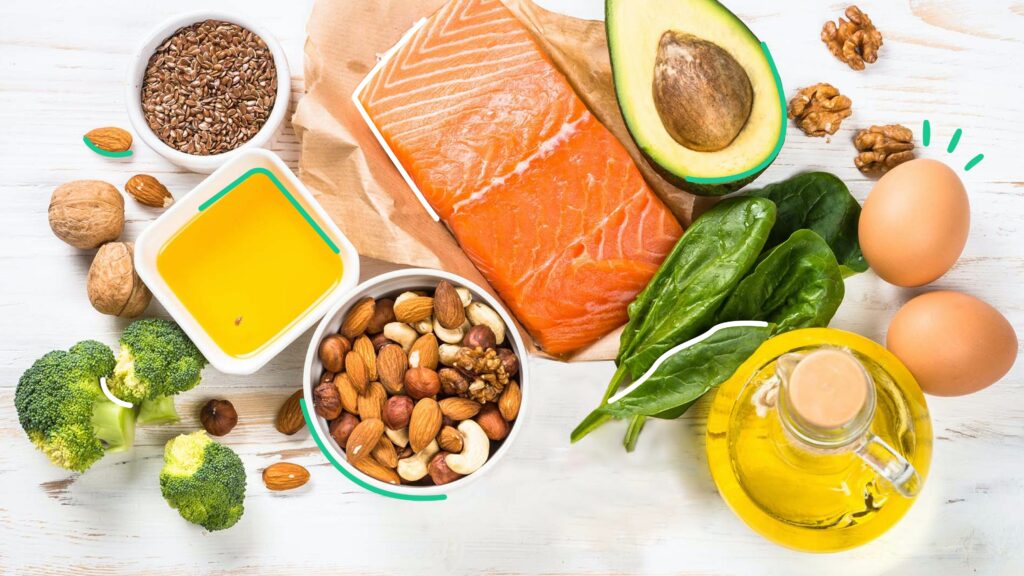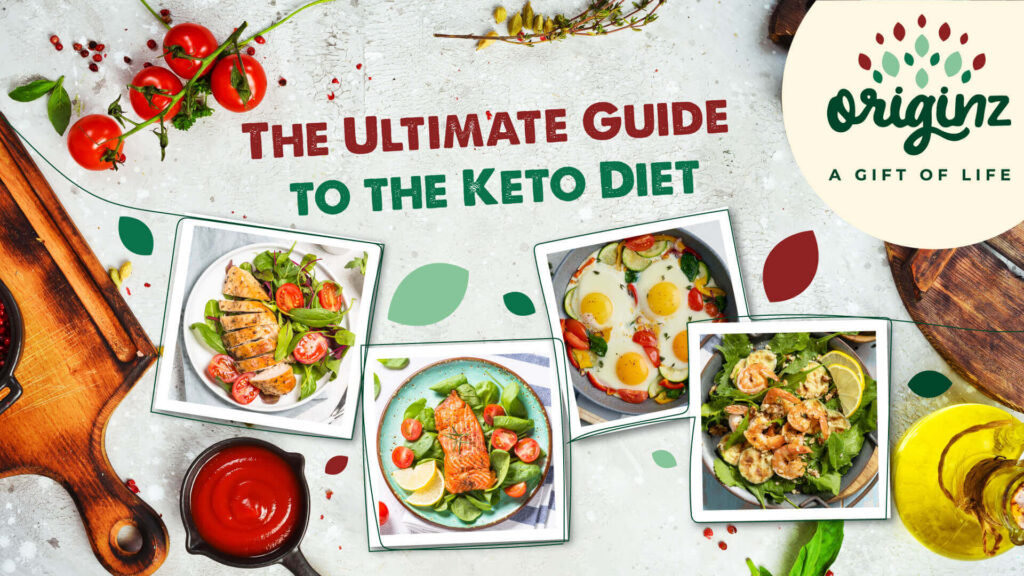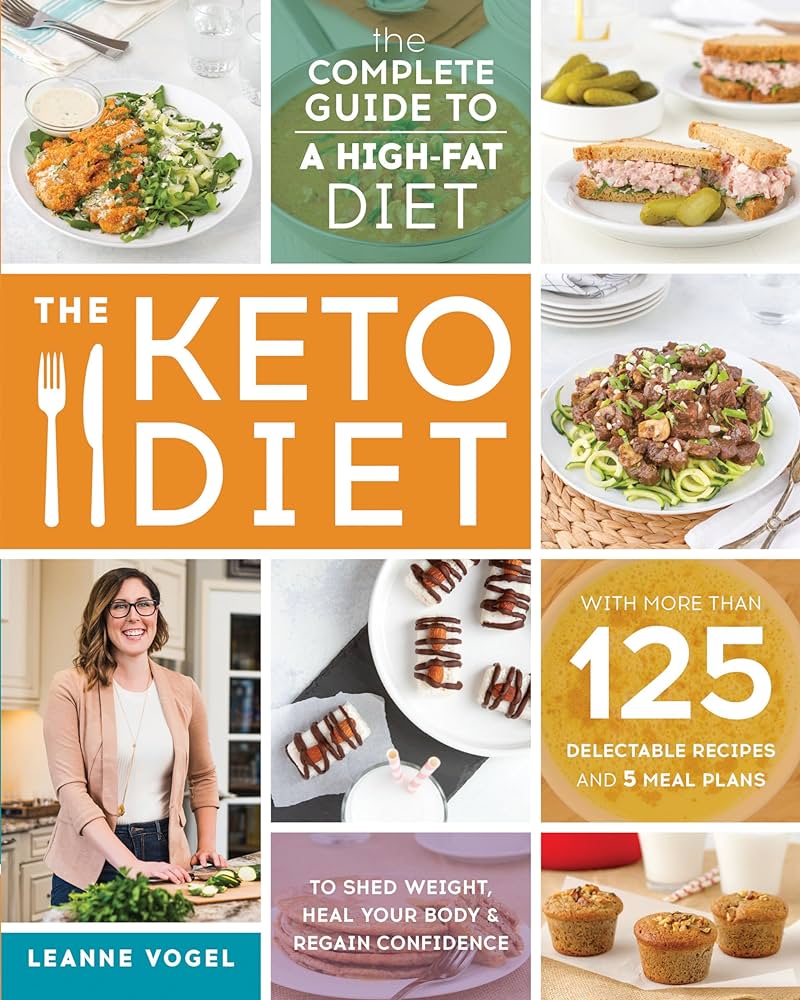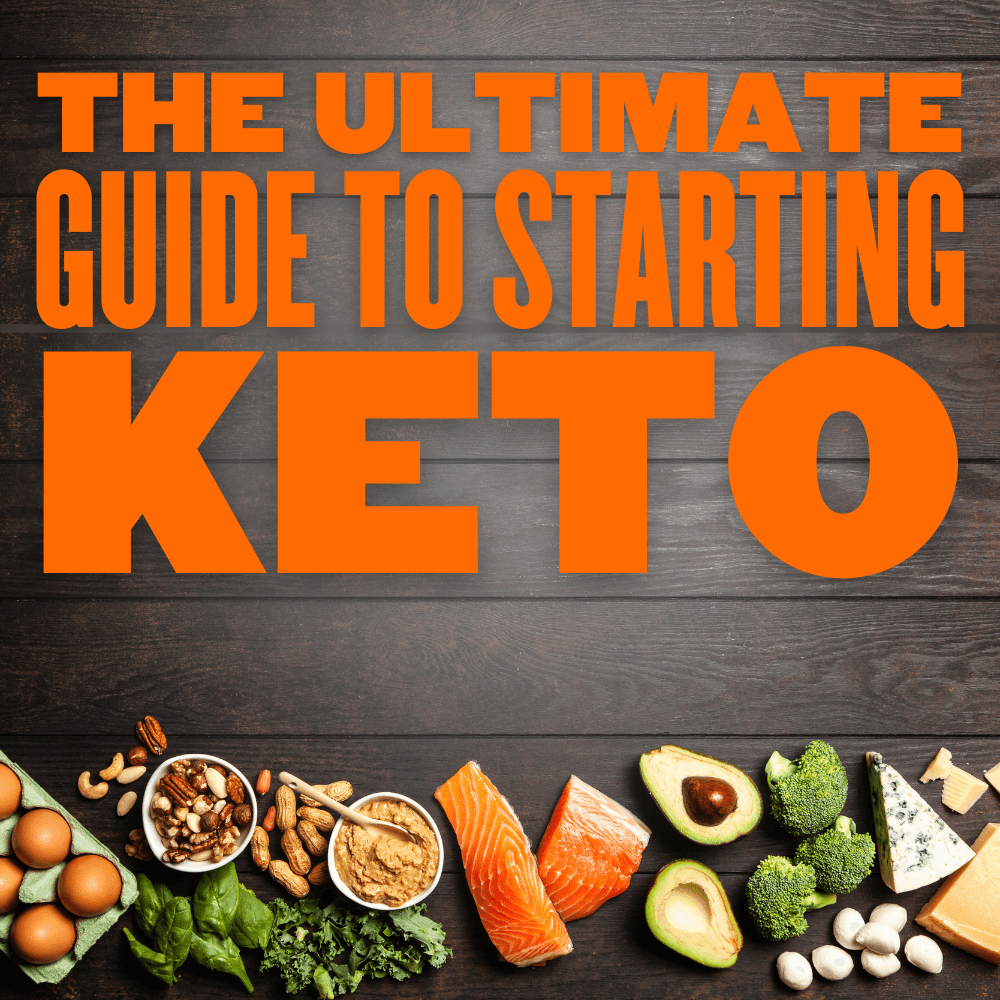If you’re looking to follow a keto diet, then “The Ultimate Guide to Keto Foods” is here to help you. Packed with valuable information and a comprehensive list of keto-friendly foods, this guide will be your go-to resource on your journey to a low-carb, high-fat lifestyle. Whether you’re a seasoned keto enthusiast or just starting out, this guide has got you covered with all the essential information you need to make informed choices about your diet. Get ready to discover a whole new world of delicious and nutritious options that will keep you satisfied while staying true to your keto goals.
Proteins
When following a keto diet, it’s important to ensure that you are consuming an adequate amount of protein. Protein is essential for building and repairing tissues, supporting immune function, and promoting satiety. Luckily, there are plenty of sources of protein that are suitable for a keto diet.
Sources of animal proteins
Animal proteins are excellent sources of protein for those following a keto diet. They not only provide all the essential amino acids our bodies need but are also naturally low in carbohydrates. Some of the best animal protein sources for keto include:
- Meat: Beef, pork, lamb, and poultry are all excellent choices as they are high in protein and healthy fats. Opt for lean cuts whenever possible.
- Fish and seafood: Fatty fish like salmon, mackerel, and sardines are not only rich in protein but also provide omega-3 fatty acids, which have numerous health benefits.
- Eggs: Eggs are packed with protein and essential nutrients. They can be enjoyed in various forms, such as scrambled, boiled, or as an ingredient in keto-friendly recipes.
Sources of plant proteins
If you follow a vegetarian or vegan keto diet, there are still plenty of plant-based protein sources to choose from. While they may not contain all the essential amino acids on their own, combining different plant protein sources can ensure you meet your protein needs. Here are some great plant protein options for keto:
- Tofu and tempeh: These soy-based products are versatile and can be used in a variety of dishes, from stir-fries to salads.
- Seitan: Made from wheat gluten, seitan is a high-protein meat substitute that can be used in dishes that call for a meaty texture.
- Nuts and seeds: Almonds, walnuts, chia seeds, and hemp seeds are just a few examples of protein-rich nuts and seeds that can be enjoyed on a keto diet.
Protein intake recommendations
The amount of protein you should consume on a keto diet can vary depending on many factors, such as your activity level, age, and overall health. As a general guideline, aim for a protein intake of around 0.6 to 1 gram of protein per pound of body weight. This means that if you weigh 150 pounds, you should aim for approximately 90 to 150 grams of protein per day. It’s important to spread out your protein intake throughout the day to support muscle repair and maintenance.
Protein-rich keto recipes
To help you incorporate protein into your keto meals, here are a few delicious recipes to try:
- Grilled chicken with roasted vegetables: Marinate chicken breasts in herbs and spices, then grill them to perfection. Serve with a side of roasted low-carb vegetables for a protein-packed and flavorful meal.
- Baked salmon with lemon and dill: Season a salmon fillet with lemon juice, dill, salt, and pepper. Bake in the oven until cooked through and serve with a side of steamed broccoli or cauliflower rice.
- Tofu scramble: Crumble tofu and sauté it with your favorite vegetables and spices for a savory and satisfying breakfast option. Enjoy it with a side of avocado for added healthy fats.
Healthy Fats
Contrary to popular belief, fats are an essential part of a well-rounded keto diet. They not only provide energy but also support various bodily functions. When following a keto diet, it’s important to focus on healthy fats that promote overall health and well-being.
Types of healthy fats
Healthy fats can be found in a variety of foods, and incorporating them into your keto diet is crucial. Some of the best sources of healthy fats include:
- Avocados: Avocados are rich in monounsaturated fats, which are known to support heart health. They can be enjoyed sliced on their own, mashed into guacamole, or blended into a creamy smoothie.
- Olive oil: Extra virgin olive oil is a staple in the Mediterranean diet and is packed with heart-healthy monounsaturated fats. Use it as a dressing for salads or as a cooking oil.
- Coconut oil: This tropical oil is composed mainly of medium-chain triglycerides (MCTs), which are easily converted into ketones, making them an excellent fuel source for those on a keto diet. Use it for cooking or add it to your morning coffee for a boost of energy.
- Nuts and seeds: Almonds, walnuts, chia seeds, and flaxseeds are all rich in healthy fats and can be enjoyed as snacks or added to meals for extra crunch and flavor.
Importance of healthy fats in a keto diet
In a keto diet, the primary source of energy comes from fats, rather than carbohydrates. By consuming an adequate amount of healthy fats, you are providing your body with the fuel it needs to function optimally. Healthy fats also help keep you feeling full and satisfied, which can prevent overeating and promote weight loss.
Recommended daily fat intake
The amount of fat you should consume on a keto diet can vary depending on your individual needs and goals. As a general guideline, aim to get around 70 to 80 percent of your daily calories from fat. This can be achieved by incorporating healthy fats into each meal and snack throughout the day.
Delicious high-fat keto recipes
To help you increase your fat intake while enjoying delicious meals, here are a few high-fat keto recipes to try:
- Bacon-wrapped avocado fries: Slice avocados into wedges, wrap them in bacon, and bake until crispy. These indulgent fries are the perfect keto-friendly appetizer or snack.
- Creamy cauliflower soup: Cook cauliflower until tender, then blend it with heavy cream, butter, and your favorite herbs and spices. This rich and comforting soup is a great way to incorporate healthy fats into your diet.
- Fat bombs: These bite-sized treats are made with a combination of healthy fats, such as coconut oil, nut butter, and cocoa powder. They are perfect for satisfying your sweet cravings while staying in ketosis.

Low-Carb Vegetables
Vegetables should be a staple in any healthy diet, including a keto diet. While some vegetables are higher in carbohydrates than others, there are plenty of low-carb options that can be enjoyed on a keto diet.
Best low-carb vegetables for keto
When choosing vegetables for a keto diet, opt for those that are low in carbohydrates but high in nutrients. Some of the best low-carb vegetables for keto include:
- Leafy greens: Spinach, kale, Swiss chard, and arugula are all packed with vitamins and minerals while being incredibly low in carbs. Enjoy them in salads, sautés, or as a base for keto-friendly wraps.
- Cruciferous vegetables: Broccoli, cauliflower, Brussels sprouts, and cabbage are all excellent choices as they are low in carbs and high in fiber. Roast them, steam them, or use them as a base for keto-friendly casseroles.
- Zucchini and other summer squash: These versatile vegetables can be spiralized into noodles, grilled, or used as a base for keto-friendly pizzas.
- Asparagus: This low-carb vegetable is not only delicious but also an excellent source of folate and vitamins A, C, and K. Grill it, roast it, or sauté it for a tasty side dish.
Leafy greens and their benefits
Leafy greens, such as spinach and kale, are nutritional powerhouses. They are rich in vitamins A, C, and K, as well as potassium and calcium. They also contain antioxidants that help protect against cellular damage and reduce inflammation in the body. Adding leafy greens to your keto meals is a great way to boost your nutrient intake while keeping your carb count low.
Keto-friendly vegetable recipes
Here are a few keto-friendly vegetable recipes to inspire you:
- Cauliflower fried rice: Pulse cauliflower in a food processor until it resembles rice and sauté it with your favorite low-carb vegetables and proteins for a delicious and healthy twist on fried rice.
- Keto zucchini lasagna: Layer thinly sliced zucchini with a flavorful meat sauce and ricotta cheese for a low-carb and keto-friendly lasagna alternative.
- Sautéed garlic butter mushrooms: Sauté mushrooms in garlic-infused butter until golden and fragrant for a simple yet delicious side dish.
Dairy and Dairy Alternatives
Dairy products can be a valuable source of protein, healthy fats, and essential nutrients on a keto diet. However, not all dairy products are suitable for keto as they can be high in lactose, which is a form of sugar. Here, we will explore keto-friendly dairy products and alternatives.
Keto-friendly dairy products
When choosing dairy products for a keto diet, opt for those that are low in carbohydrates and high in fat. Some keto-friendly dairy products include:
- Full-fat cheese: Cheese is a great source of protein and healthy fats. Opt for hard, aged cheeses like cheddar, Gouda, or Parmesan, as they tend to have lower lactose content.
- Greek yogurt: Greek yogurt is higher in protein and lower in carbohydrates compared to regular yogurt. Enjoy it as a snack or use it as a base for keto-friendly dips and dressings.
- Heavy cream: Heavy cream is perfect for adding richness and creaminess to sauces, soups, and coffee. It’s high in fat and low in carbs, making it an excellent addition to a keto diet.
Non-dairy alternatives for a keto diet
If you prefer to avoid dairy or have lactose intolerance, there are plenty of non-dairy alternatives available that are suitable for a keto diet. Some keto-friendly non-dairy options include:
- Coconut milk: Coconut milk is high in healthy fats, making it a great alternative to regular milk or cream. Use it as a base for smoothies or in recipes that call for milk or cream.
- Almond milk: Unsweetened almond milk is low in carbohydrates and can be enjoyed as a beverage or used in keto recipes.
- Nut-based cheeses: Made from nuts and seeds, nut-based cheeses are an excellent alternative for those following a dairy-free keto diet. They can be found in specialty stores or made at home with simple ingredients.
Keto dairy-based recipes and substitutes
Here are a few keto-friendly recipes that incorporate dairy or dairy substitutes:
- Cheese and spinach stuffed chicken breasts: Pound chicken breasts until thin, then stuff them with a mixture of spinach and your favorite cheese. Bake until cooked through, and enjoy a satisfying and flavorful meal.
- Avocado smoothie with coconut milk: Blend avocado, coconut milk, spinach, and a low-carb sweetener for a creamy and refreshing keto-friendly smoothie.
- Cashew-based ranch dressing: Soak cashews overnight, then blend them with herbs and spices for a delicious and dairy-free keto ranch dressing.

Nuts and Seeds
Nuts and seeds are not only a convenient and portable snack but also packed with essential nutrients. They are also a great source of healthy fats and protein, making them a perfect addition to a keto diet.
Nutritional benefits of nuts and seeds
Nuts and seeds are rich in healthy fats, fiber, vitamins, and minerals. They are also a source of plant-based protein, making them an excellent choice for vegans or vegetarians on a keto diet. Some of the nutritional benefits of nuts and seeds include:
- Omega-3 fatty acids: Some nuts, such as walnuts and chia seeds, are rich in omega-3 fatty acids, which have been shown to have numerous health benefits, including reducing inflammation and improving heart health.
- Fiber: Nuts and seeds are high in fiber, which can support digestive health, promote feelings of fullness, and help stabilize blood sugar levels.
- Vitamins and minerals: Nuts and seeds are packed with essential vitamins and minerals, such as vitamin E, magnesium, and zinc, which are crucial for overall health and well-being.
Keto-friendly nuts and seeds
While most nuts and seeds are suitable for a keto diet, some varieties are especially low in carbohydrates and high in healthy fats. Here are a few keto-friendly nuts and seeds to incorporate into your diet:
- Almonds: Almonds are packed with healthy fats, fiber, and protein while being relatively low in carbohydrates. Enjoy them as a snack or use them as a crunchy topping for salads or keto-friendly desserts.
- Chia seeds: Chia seeds are a nutritional powerhouse, providing a good balance of healthy fats, fiber, and protein. They can be added to smoothies, yogurt, or used as a thickener in keto-friendly puddings and sauces.
- Flaxseeds: Flaxseeds are rich in fiber, omega-3 fatty acids, and lignans, which have been shown to have antioxidant and anti-inflammatory properties. Grind them up and use them as a breading for chicken or sprinkle them on top of keto-friendly baked goods.
Ways to incorporate nuts and seeds into your keto meals
Here are a few ideas for incorporating nuts and seeds into your keto meals and snacks:
- Trail mix: Create your own keto-friendly trail mix by combining a variety of nuts and seeds, such as almonds, walnuts, pumpkin seeds, and sunflower seeds. Add some unsweetened coconut flakes or dark chocolate for extra flavor.
- Nut butters: Enjoy a spoonful of almond butter or peanut butter as a quick and satisfying snack. You can also use them as a dip for celery sticks or spread them on keto-friendly bread or crackers.
- Seed crackers: Make your own low-carb seed crackers by combining ground flaxseeds, chia seeds, and water. Spread the mixture onto a baking sheet and bake until crispy. Enjoy them with your favorite keto-friendly dips or cheeses.
Berries and Low-Sugar Fruits
While fruits are typically higher in carbohydrates, there are some low-sugar options that can be enjoyed on a keto diet. Berries, in particular, are a great choice as they are relatively low in carbs and packed with vitamins, minerals, and antioxidants.
Keto-friendly berries
Berries are not only delicious but also provide a host of health benefits. Some of the keto-friendly berries you can enjoy on a keto diet include:
- Strawberries: With only around 6 grams of net carbs per cup, strawberries are a great choice for those following a keto diet. They are also a good source of vitamin C and manganese.
- Raspberries: Raspberries are high in fiber and antioxidants while being relatively low in carbohydrates. Enjoy them on their own, blended into a smoothie, or sprinkled on top of yogurt or keto desserts.
- Blackberries: Blackberries are rich in fiber and contain beneficial compounds that have been shown to have anti-inflammatory properties. They can be enjoyed as a snack, added to salads, or used in keto-friendly berry sauces.
Low-sugar fruits suitable for a keto diet
Besides berries, there are a few other low-sugar fruits that can be included in a keto diet in moderation. Some examples include:
- Avocado: While technically a fruit, avocados are low in carbs and high in healthy fats. They can be enjoyed in various ways, from sliced on their own to blended into keto-friendly smoothies or used as a base for creamy dressings and sauces.
- Lemons and limes: Although they are not typically consumed in large quantities, lemons and limes can add a burst of flavor to your keto meals and beverages without significantly affecting your carbohydrate intake.
- Coconut: Coconuts are not only low in carbohydrates but also high in healthy fats. Enjoy fresh coconut meat, coconut milk, or unsweetened coconut flakes as a keto-friendly addition to your diet.
Creative ways to enjoy berries and low-sugar fruits on keto
Here are a few creative ways to enjoy berries and low-sugar fruits while staying in ketosis:
- Berry smoothie bowl: Blend a handful of berries with unsweetened almond milk and a scoop of low-carb protein powder. Pour the mixture into a bowl and top it with nuts, seeds, and a dollop of nut butter for a nutritious and satisfying breakfast or snack.
- Mixed berry salad: Combine a variety of berries with fresh mint leaves and a squeeze of lemon juice for a refreshing and colorful salad. Enjoy it on its own or as a topping for Greek yogurt or low-carb pancakes.
- Coconut milk chia pudding: Mix chia seeds with coconut milk, a touch of vanilla extract, and a few drops of low-carb sweetener. Let it sit in the refrigerator overnight, and in the morning, top it with your favorite berries and a sprinkle of unsweetened coconut flakes.

Herbs and Spices
Herbs and spices not only add flavor and aroma to your keto meals but also provide numerous health benefits. They are an excellent way to enhance the taste of your dishes without adding excess calories or carbohydrates.
Keto-friendly herbs and their health benefits
Herbs are an essential part of any flavorful keto dish. Besides adding taste and aroma, certain herbs also provide unique health benefits. Here are a few keto-friendly herbs and their health benefits:
- Basil: Basil is rich in antioxidants and has anti-inflammatory properties. It pairs well with tomatoes, making it a great addition to Caprese salads or keto-friendly tomato-based sauces.
- Rosemary: Rosemary has been shown to have antimicrobial properties and can help improve digestion. It adds a unique flavor to roasted meats and vegetables.
- Cilantro: Cilantro is packed with antioxidants and has been traditionally used for its detoxifying properties. It is a common ingredient in salsas and adds a fresh and vibrant taste to salads and Mexican-inspired dishes.
Keto-approved spices for adding flavor
Spices not only add depth and complexity to your keto meals but also offer numerous health benefits. Here are a few keto-approved spices that can kick your recipes up a notch:
- Turmeric: Turmeric contains curcumin, a compound with potent anti-inflammatory properties. It pairs well with a variety of dishes, from curries to scrambled eggs.
- Cinnamon: Cinnamon can help stabilize blood sugar levels and adds a warm and comforting flavor to both sweet and savory dishes. Sprinkle it on top of keto-friendly oatmeal or blend it into your morning coffee for added flavor.
- Paprika: Paprika adds a smoky and slightly sweet flavor to dishes. It is a great addition to marinades, rubs, and keto-friendly chili recipes.
Spice combinations for keto cooking
Experimenting with different spice combinations is an excellent way to add flavor and variety to your keto meals. Here are a few spice combinations that work well together:
- Italian seasoning: Combine dried basil, oregano, thyme, rosemary, and garlic powder for a classic Italian flavor profile. Use it to season meats, roasted vegetables, or homemade keto-friendly marinara sauce.
- Curry powder: Curry powder is a blend of various spices, including turmeric, cumin, coriander, and ginger. It adds a rich and complex flavor to curries, roasted vegetables, or even scrambled eggs.
- Mexican spice blend: Create a Mexican-inspired spice blend by combining chili powder, cumin, paprika, garlic powder, and a touch of cayenne pepper. Use it to season ground meat for tacos, sprinkle it on roasted vegetables, or mix it into guacamole for a flavorful kick.
Beverages
Staying hydrated is crucial on a keto diet. While water should be your primary beverage, there are several other options that can help you stay hydrated and satisfy your cravings without derailing your ketosis.
Hydrating options on keto
In addition to water, there are several hydrating options that are suitable for a keto diet. Some of the best hydrating options on keto include:
- Herbal tea: Unsweetened herbal teas are a great way to hydrate and enjoy a variety of flavors. Opt for caffeine-free options such as chamomile, peppermint, or hibiscus tea.
- Infused water: Infusing water with fresh fruits, herbs, or vegetables can add flavor and make it more enjoyable to drink. Try infusing water with cucumber and mint or lemon and ginger for a refreshing twist.
- Bone broth: Bone broth is not only hydrating but also rich in electrolytes and minerals. Enjoy it as a warm and comforting drink or use it as a base for soups and stews.
Low-carb and no-sugar-added drink choices
When it comes to low-carb and no-sugar-added drink choices, there are several options that can be enjoyed on a keto diet. Here are a few examples:
- Unsweetened nut milk: Almond milk, coconut milk, and macadamia nut milk are all low in carbohydrates and can be enjoyed as a beverage or used in keto-friendly recipes.
- Sparkling water: Sparkling water is a refreshing and bubbly alternative to sugary sodas. Look for varieties that are unsweetened and free of artificial sweeteners.
- Coffee and tea: Black coffee and unsweetened tea are low in carbohydrates and can be enjoyed on a keto diet. Opt for natural sweeteners like stevia or monk fruit if you prefer a sweeter taste.
Keto-friendly hot and cold beverage recipes
To add variety to your keto beverages, here are a few recipes to try:
- Iced matcha latte: Mix matcha powder with unsweetened almond milk, a touch of vanilla extract, and a low-carb sweetener. Pour it over ice and enjoy a refreshing and caffeine-packed beverage.
- Bulletproof coffee: Blend freshly brewed coffee with a tablespoon of grass-fed butter or coconut oil and a dash of cinnamon for a creamy and satisfying morning pick-me-up.
- Golden milk latte: Heat unsweetened almond milk with turmeric, ginger, cinnamon, and a pinch of black pepper. Add a touch of coconut oil or ghee for extra creaminess. Enjoy this soothing and anti-inflammatory beverage hot or cold.

Keto Snacks
Snacking on a keto diet can be challenging, particularly when it comes to finding satisfying, on-the-go options. However, with a little planning, there are plenty of store-bought and homemade keto snacks that can keep you fueled and satisfied throughout the day.
Store-bought keto snacks
When looking for store-bought keto snacks, it’s important to read labels and choose options that are low in carbohydrates and free of added sugars. Some keto-friendly store-bought snacks include:
- Beef jerky: Look for beef jerky that is free of added sugars and made with minimal ingredients. It’s a great source of protein and can be enjoyed on its own or paired with cheese or nuts.
- Pork rinds: Pork rinds are carb-free and make a satisfyingly crunchy snack. Enjoy them on their own or use them as a topping for salads or keto-friendly nachos.
- Nut and seed mixes: Look for pre-packaged nut and seed mixes that are low in carbohydrates and free of added sugars. They are a convenient and portable snack option.
Easy homemade keto snacks
Making your own keto snacks at home allows you to control the ingredients and customize the flavors according to your preferences. Here are a few easy homemade keto snacks to try:
- Parmesan cheese crisps: Grate Parmesan cheese and spoon it into small mounds on a baking sheet. Bake until crispy and enjoy these cheesy and low-carb chips on their own or as a crunchy topping for soups or salads.
- Keto fat bombs: Fat bombs are a popular keto-friendly snack that is made with a combination of healthy fats, such as coconut oil, nut butter, and cocoa powder. They are perfect for satisfying your sweet cravings while staying in ketosis.
- Veggie sticks with dip: Slice cucumbers, bell peppers, and celery sticks into convenient dipping sizes. Enjoy them with a keto-friendly dip, such as ranch dressing or homemade guacamole.
Tips for choosing healthy and satisfying keto snacks
When choosing snacks on a keto diet, there are a few tips that can help you make healthier and more satisfying choices:
- Opt for whole foods: Choose snacks that are made with real, whole ingredients rather than highly processed options. This will ensure you are getting the most nutritional value out of your snacks.
- Focus on protein and healthy fats: Protein and healthy fats are incredibly satiating and can help keep you feeling full and satisfied between meals. Look for snacks that are high in these macronutrients.
- Read labels: Pay attention to the nutrition labels of store-bought snacks and avoid those that are high in carbohydrates or contain added sugars. Look for snacks that have minimal ingredients and are as unprocessed as possible.
Sweeteners
While sugar is off-limits on a keto diet, there are several natural sweeteners and low-carb sugar substitutes that can be enjoyed in moderation. They can help satisfy your sweet tooth without derailing your ketosis.
Natural sweeteners suitable for keto
Natural sweeteners are a great option for those on a keto diet as they have a lower impact on blood sugar levels compared to regular sugar. Some natural sweeteners suitable for keto include:
- Stevia: Stevia is a calorie-free sweetener that comes from the leaves of the stevia plant. It is often used as a sugar substitute in keto-friendly recipes.
- Monk fruit extract: Monk fruit extract is derived from the fruit of the monk fruit, known for its intense sweetness. It contains no calories or carbohydrates and can be used in a variety of keto-friendly recipes.
- Erythritol: Erythritol is a sugar alcohol that has virtually no impact on blood sugar levels. It can be used as a one-to-one substitute for sugar in baking and cooking.
Low-carb sugar substitutes
If you prefer to use sugar substitutes that behave more like sugar in recipes, there are several low-carb options available. Some examples include:
- Swerve: Swerve is a combination of erythritol and natural flavors that closely mimics the taste and texture of sugar. It can be used in a variety of keto-friendly recipes, including baked goods and dessert.
- Allulose: Allulose is a low-calorie sweetener that is almost as sweet as sugar but with minimal impact on blood sugar levels. It works well in keto-friendly recipes and can be used in place of sugar in a variety of dishes.
- Xylitol: Xylitol is a sugar alcohol that is similar in sweetness to sugar and can be used as a one-to-one substitute. However, it’s important to note that xylitol may cause digestive discomfort in some people, so it should be consumed in moderation.
Recipes for keto-friendly desserts and treats
Here are a few recipes for keto-friendly desserts and treats that use natural sweeteners or low-carb sugar substitutes:
- Keto chocolate mousse: Whisk together unsweetened cocoa powder, heavy cream, a low-carb sweetener, and a touch of vanilla extract. Chill the mixture until thickened, and enjoy a silky and indulgent chocolate mousse.
- Low-carb cheesecake: Combine cream cheese, eggs, a low-carb sweetener, and vanilla extract. Bake until set, and top it with your favorite low-carb fruit or sauce for a satisfying and creamy dessert.
- Keto granola bars: Mix together nuts, seeds, nut butter, and a low-carb sweetener. Press the mixture into a baking dish and bake until golden brown. Cut into bars and enjoy as a convenient and delicious snack.

Hi! My name is Linda, and I’m a health and fitness specialist. I’m passionate about helping people live their healthiest and happiest lives. In my articles I share my knowledge and experience on all things health and fitness. With a passion for writing and a deep understanding of the health and fitness landscape, Linda has established herself as a trusted authority in the field.